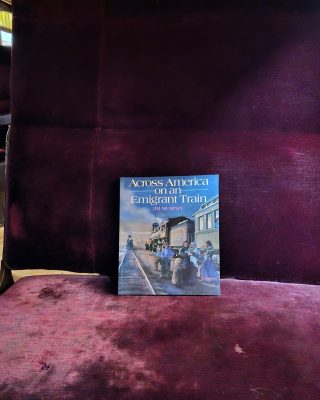Our intern Spencer has reviewed another book in the Museum’s collection. This week, he’s looking at Across America on an Emigrant Train by Jim Murphy.
 Across America on an Emigrant Train follows author Robert Louis Stevenson’s (Treasure Island, Strange Case of Dr. Jekyll and Mr. Hyde) journey from his native country of Scotland to San Francisco, California via steamboat and steam engine in 1879. The journey to America for emigrants was often incredibly difficult, dangerous and sometimes fatal even after the completion of the transcontinental railroad.
Across America on an Emigrant Train follows author Robert Louis Stevenson’s (Treasure Island, Strange Case of Dr. Jekyll and Mr. Hyde) journey from his native country of Scotland to San Francisco, California via steamboat and steam engine in 1879. The journey to America for emigrants was often incredibly difficult, dangerous and sometimes fatal even after the completion of the transcontinental railroad.
Lower class passengers who could not afford luxury train tickets were often forced into cattle cars. Some had to stand the entire length of the trip, which could be anywhere from several hours to several days. These carriages were often disease ridden too, leading many passengers to become sick with a plethora of diseases before arriving at their destination.
The book uses Stevenson’s firsthand accounts to illustrate these intense hardships as well as the excitement and hope that a lot of emigrants including Stevenson had during this adventure. It shows what experiences shaped Stevenson to be the type of writer that he became and what inspired him. The book uses his journey as a central throughline but deviates to provide historical context to the events he was experiencing. This makes the book dynamic, alternating from educational sections to the exciting firsthand accounts of Stevenson. It does a good job at introducing a lot of these complicated historical events in a way that is easy to understand and gives a good starting point for people interested in this period of American (roughly 1850-1900).
Due to these elements, I found it to be a very breezy read, never getting too dry but still providing a lot of important history. However, because of this writing style it does end up reducing both the historical events and Stevenson himself to a 2-dimensional version negating a lot of the more complicated and less palatable parts of their history. However, because this book is not meant to be an all-encompassing account it does not affect its educational value. So overall I would recommend this book to anyone interested in this period of history looking for an introduction, especially younger readers.

